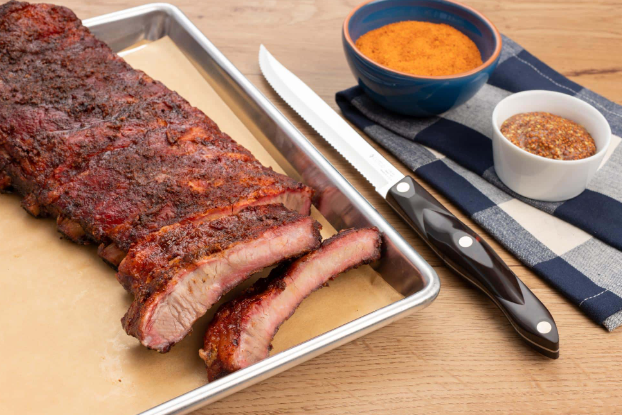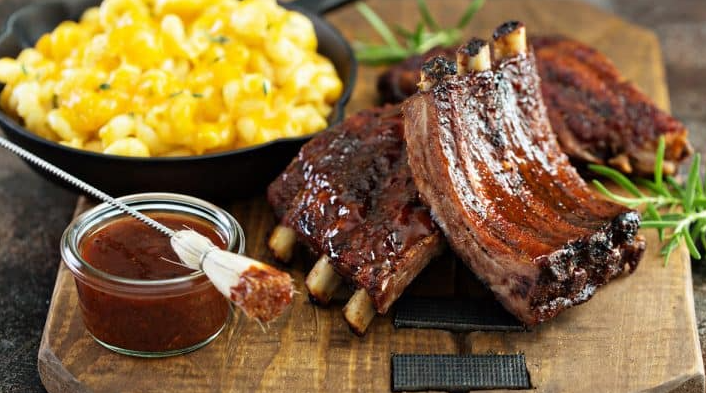How to Tell if Pork Shoulder is Done Without a Thermometer: A Comprehensive Guide
Cooking pork shoulder to the perfect doneness is crucial for achieving tender and juicy results. While using a meat thermometer is the most accurate way to determine if your pork shoulder is done, there are alternative methods that can be used if you don't have a thermometer on hand. In this article, we will explore various techniques and indicators that can help you determine if your pork shoulder is cooked to perfection without relying on a thermometer.

How to tell if pork shoulder is done without thermometer?
1. Visual Inspection:
One of the simplest ways to assess the doneness of pork shoulder is through visual cues. Here are some signs to look for:
-
Color: A fully cooked pork shoulder will have a golden brown or mahogany color on the outside. The meat should no longer appear pink.
-
-
Crust Formation: The surface of the pork shoulder develops a crust during the cooking process. A well-cooked pork shoulder will have a crispy and caramelized crust.
-
-
Rendered Fat: As the pork shoulder cooks, the fat within the meat renders and begins to melt. You should see fat dripping and browning around the edges of the meat.
-
2. Texture and Feel:
Examining the texture and feel of the pork shoulder can provide valuable insights into its doneness. Consider the following indicators:
-
Firmness: A properly cooked pork shoulder will feel firm to the touch. Gently press the meat with tongs or a fork, and it should offer some resistance but still feel tender.
-
-
Pull-Apart Test: Using a fork or tongs, try to pull apart the meat. If it easily shreds or pulls apart with little resistance, the pork shoulder is likely done.
-
-
Bone Wiggle: If your pork shoulder has a bone, check if it wiggles easily. If the bone is loose and can be easily separated from the meat, it is a good indication that the pork shoulder is fully cooked.
-
3. Internal Appearance:
While you may not have a thermometer to measure the internal temperature, there are visual cues to consider when assessing the doneness of pork shoulder:
-
Juices: When the pork shoulder is fully cooked, the juices that come out of the meat should run clear or have a slight pink tinge. Avoid any meat that releases bloody or excessively pink juices.
-
-
Moisture: A properly cooked pork shoulder will retain its moisture. If the meat appears dry and lacks juiciness, it may not be fully cooked.
-
4. Time and Recipe Guidelines:
Another way to gauge the doneness of your pork shoulder is by following cooking time and recipe guidelines:
-
Recipe Instructions: Consult the recipe you are using for estimated cooking times. While this method is not foolproof, it can provide a general idea of when the pork shoulder may be done.
-
-
Fork Test: Insert a fork into the thickest part of the pork shoulder and twist it gently. If the fork goes in easily and the meat pulls apart, it is likely cooked through.
-
-
Resting Time: After removing the pork shoulder from the heat source, allow it to rest for 10-15 minutes before slicing. This resting period allows the juices to redistribute, resulting in a moister and more flavorful final product.
-
5. Safety Considerations:
While these alternative methods can help you determine if your pork shoulder is done, it's essential to prioritize food safety:
-
The USDA recommends cooking pork to an internal temperature of 145°F (63°C) with a three-minute rest time. While visual cues and texture can provide indications of doneness, it's always recommended to use a meat thermometer for accurate temperature readings.
-
-
If you are uncertain about the doneness of your pork shoulder, it's better to err on the side of caution and continue cooking until you can verify its internal temperature.

Pork shoulder is done
Cooking a pork shoulder to the proper doneness without a thermometer may require some practice and experience. By using visual cues, texture and feel, internal appearance, following recipe guidelines, and prioritizing food safety, you can confidently determine if your pork shoulder is cooked to perfection. Remember, while these alternative methods can be helpful, using a meat thermometer remains the most reliable way to ensure food safety and achieve the desired level of doneness for your pork shoulder.